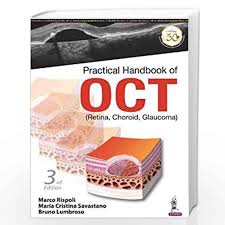Practical Handbook Of Oct (Retina, Choroid, Glaucoma)
no information available
Discover the comprehensive Practical Handbook of OCT (Retina, Choroid, Glaucoma) authored by Marco Rispoli, Maria Cristina Savastano, and Bruno Lumbroso. This essential guide offers a step-by-step approach to interpreting Optical Coherence Tomography images, aiding in the accurate diagnosis and management of retinal diseases and glaucoma. Divided into three sections, it covers methods of OCT interpretation, elementary lesions and frequent diseases, and introduces new syndromes and classifications. Ideal for ophthalmologists, residents, and optometrists, this handbook is available for purchase online at Sriina, your trusted online bookstore, at an affordable price. ... Read more Read less











